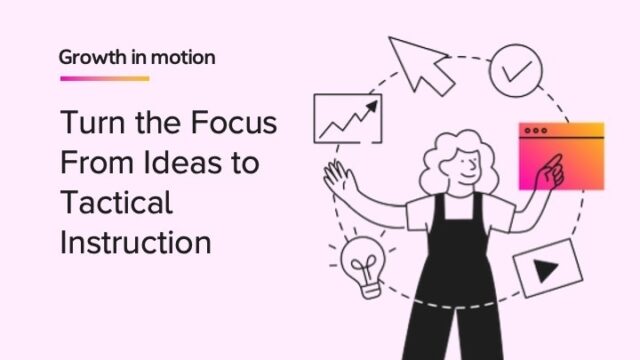
Teachers know that truly meaningful learning happens when students are genuinely engaged. Student engagement means that they are actively thinking, asking questions, investigating problems, developing solutions, and taking ownership of the learning process. Engagement also means that schoolteachers become facilitators of learning instead of direct instructors. But what does an engaged classroom actually look like in practice, and how can we measure it?
There are many ways an engaged classroom might show itself. The following student engagement observation checklists can help you evaluate engagement strengths and areas for improvement. Each measure may not apply to all classrooms or all lessons but taken together, these markers can help teachers develop an overall picture of their classroom’s level of engagement.
4 Classroom Observation Checklists for Student Engagement
1. Make a soft skills checklist
Soft skills are difficult to measure in a classroom, but that doesn’t mean they aren’t crucial to its function. Creating an atmosphere that is conducive to learning while allowing students to feel safe and heard is no easy feat. The following prompts may help you establish a plan to make your students feel included in their learning.
Is there evidence to suggest that students feel safe respectfully sharing an unpopular opinion or a view that may challenge their teacher?
Consider how the teacher reacts to student voices in the classroom, particularly those that, in an appropriate manner, challenge the material or express disagreement. Are genuine student voices heard? Is a range of student voxfices heard?
Does the teacher create a “growth mindset” atmosphere in the classroom?
Good classrooms create an environment that encourages growth. Evidence of such a growth mindset atmosphere may be observed through the teacher’s language as students encounter challenges or through visuals with growth mindset messages in the room. For example, a student who states “I can’t do this” might be encouraged to continue trying with a positive statement such as, “Don’t worry! You’ll get better with practice.” Or perhaps the teacher uses motivational posters with positive messages, such as, “Mistakes are proof that you’re trying.”
Are student successes celebrated?
How does the teacher react to and recognize moments where students overcome challenges and reach their goals? Are there systems in place to acknowledge these accomplishments?
Is student misbehavior redirected through clear, matter-of-fact instructions?
Emotional reactions can escalate student misbehavior and conflicts, which leads to disengagement for the individual student and their surrounding peers. The teacher should be firm and straightforward, but not emotionally engaged when handling misbehavior.
Are consequences clear, immediate, predictable, and connected to specific behaviors?
When students understand a teacher’s system for addressing behavior, misbehaviors can be managed quickly and with minimal loss of learning time.
Are student voices heard as often as the teacher’s voice?
In a student-centered classroom, student voices are involved in a variety of instructional moments—from clarifying directions to exploring challenging questions. The teacher should avoid doing the thinking for their students to encourage genuine inquiry and exploration.
Is there evidence of student joy in the classroom?
This measure may be observed through student demeanor—smiles, laughter, and humor. It may also be evidenced by student excitement to share their thinking or a work product.
Is there evidence of teacher joy in their teaching work?
This measure may be evidenced through a teacher’s demeanor—again, smiles, laughter, and humor. It may also be seen in their enthusiasm for teaching the topic of their lesson.
2. Intellectual markers checklist
Grades and report cards don’t tell the whole story! There are many different ways in which students express their understanding of the subjects, and a lot of these might not be directly apparent. You can use the following questions to create an inclusive learning environment.
Does every student have an opportunity to share their thinking verbally, visually, or through writing?
Students may feel most comfortable sharing their ideas through different modes. Does the lesson provide more than one way for students to share their thoughts? Does the instruction encourage all pupils to share?
Does the teacher use strategies to solicit participation from every student in the room?
This may be evidenced in a number of ways. The teacher might use popsicle sticks to randomly select students for participation, such as for answering a question. The teacher might use pre-alerting (privately notifying a student before calling on them) to prepare a reluctant speaker for sharing; alternatively, the teacher might also ask reluctant sharers to repeat or respond to the statements of other students. And finally, the teacher might use questioning to help guide a student toward the correct answer. Approaches here will vary but should ultimately be effective in eliciting participation.
Are objectives clear and framed around higher-order-thinking questions?
Clear objectives give purpose to student work. Higher-order-thinking questions produce engagement because they are typically open-ended and explorable.
Are objectives relevant to students? Are students told why a lesson is relevant?
Students are more engaged when they feel a sense of purpose in what they are doing. If the relevance of a particular activity is not immediately clear, the teacher must take steps to explain or show how the learning is connected to students’ present or future lives.
Do students have the opportunity to discuss higher-order-thinking questions with their peers?
The teacher might facilitate peer-to-peer discussions by building in procedures such as Turn and Talks or think-pair-shares—where students quickly discuss a question or share their work with a classmate—or procedures like gallery walks, fishbowl discussions, and Socratic circles.
Does classroom discussion move from peer to peer, allowing them to respond to peer thinking instead of always moving between teacher and student?
Often, classroom discussions end up looking more like short interactions between the teacher and specific students. Unfortunately, this affords other students the opportunity to misbehave or stop paying attention. Instead, the teacher can help facilitate peer-to-peer discussions, where students directly add onto, question, or respond to each other’s statements. Teachers can support this by providing discussion sentence starters, such as, “I agree/disagree because ___,” “I’m hearing you say ___,” and “Adding onto ___’s idea . . .”
Do students have the opportunity to solve problems collaboratively with their peers?
For effective learning, students need to occasionally work together on assignments and in-class activities. This sort of group work should require discussion, debate, and reflection with peers.
Are there scaffolds in place to help all students meet the same objectives?
A task that is too easy or too difficult will cause students to abandon their learning efforts. How does the teacher support students with different aptitude levels so that they can all reach the same goal?
Is there evidence that assignments have been differentiated based on student needs?
Differentiation does not mean giving different assignments or tasks—it means making an assignment or task accessible to all students. Differentiation may be evidenced by assignment adaptations like sentence starters or the presence of a writing organizer.
Is risk-taking encouraged in a safe learning environment?
It can be challenging to measure risk-taking with observational evidence. However, this might be seen through a student’s willingness to venture an answer to a challenging question and by their reaction to failure. Consider as well whether students in the room keep getting shut down after facing challenges. How does the teacher respond to and prompt students to persist in their learning after a challenge or failure?
Does the teacher have strategies for checking all students’ understanding?
In other words, does the teacher make use of formative assessments? A student who feels lost or behind may disengage from the lesson to avoid the discomfort of failure. Formative assessments ensure that teachers quickly identify and address student confusion.
Are high standards for student behavior and work quality apparent in the classroom?
This may be evidenced through a teacher’s feedback to students, their requirements for an assignment, the rigor of an assignment itself, or a clear procedure for measuring student outcomes, such as a detailed rubric that outlines all expectations.
3. Physical markers checklist
Sometimes, minor things like the setup of your class can have unforeseen effects on its atmosphere. Consider these few prompts to confirm if your classroom arrangement is conducive to learning.
Are desks or seats arranged to facilitate discussion or collaboration? Is the desk or seat arrangement student-centered?
Many traditional seating arrangements are excessively teacher centered—such as an arrangement of several rows of desks—and therefore ineffective. Does the physical setup of the classroom facilitate appropriate student-to-student discussions? One example of such a seating arrangement is the horseshoe layout, where students can both see the front board and one another, and the instructor is given ample space to walk about and address all students.
Are there options for flexible seating?
Flexible seating means students can choose between a variety of different seating options, such as a traditional desk, a group table, a beanbag, or a rug. Flexible seating is not appropriate in all classroom contexts, but it provides students with a sense of control and is worth considering where appropriate.
Do classroom visuals or tactile materials support content or skill goals from the curriculum? Do they enhance or support student understanding of the material?
This may involve posting an objective or essential question where it’s visible to keep students focused on a learning goal throughout the duration of the class period. It may also involve the use of illustrations and videos to accompany traditional instruction.
4. Structural markers checklist
A “one-size-fits-all” class schedule doesn’t exist, but there are subtle improvements that you can make to introduce a structure that is inclusive to your students. Balancing defined routines with looser scheduled moments and punctuating periods of focused work with more whimsical activities can be a great step forward. These questions can help you assess your schedule and its effects on your students.
Are there clear routines and procedures in place that students have learned?
Well-defined classroom procedures and routines may not seem immediately linked to engagement, but when students have internalized these structures and can practice them without receiving constant reminders, then class time is freed up for more interesting academic pursuits. Moreover, with clear procedures in place, students will feel a greater sense of independence and maturity if they don’t feel like they are constantly being reminded to do something.
Are lessons structured to avoid downtime?
A well-planned lesson ensures that students are not waiting for their teacher to set up activities or for peers to finish a task before they can move on. A downtime-free lesson might include challenge work for early finishers, a list of classroom jobs, or simply a teacher moving some students through activities without breaking the instructional flow for others.
Do lessons include frequently changing tasks or activities?
Students, especially in elementary grades, struggle to stay focused on tasks for long periods of time. Is the lesson divided into a range of quick-moving activities to keep students alert and on their toes?
Are “brain breaks” present in the lesson structure?
Again, we know that students struggle to maintain their long-term focus. Brain breaks can be in the form of five minutes of free time, the opportunity to watch a funny video, a meditation break, or a movement break that allows students to get up and out of their seats. These breaks are developmentally appropriate for children and teens and allow them to recoup before diving back into rigorous work.
Find What Works for Your Students
Student engagement may look different in each classroom and in each lesson, but fundamentally, it always involves the same principle—students wanting and being able to learn. These student engagement checklists will help you more concretely assess whether a teacher’s classroom is conducive to student engagement.
This article was adapted from a blog post initially developed by the education technology company Classcraft, which was acquired by HMH in 2023. The views expressed in this article are those of the author and do not necessarily represent those of HMH.
***
Find more lesson plans and classroom resources on Shaped.













